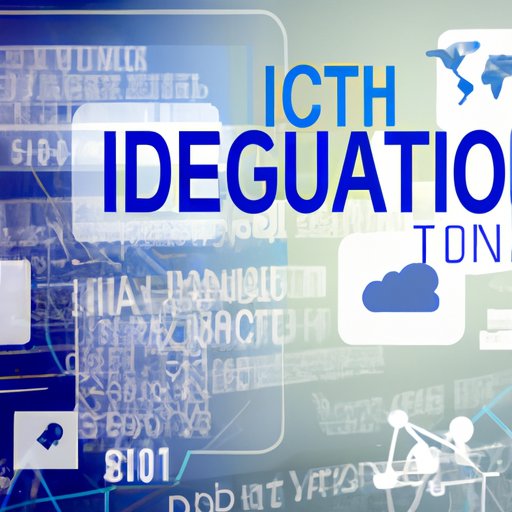Introduction
Digital information technology has become a key part of our lives, from the way we communicate to how we conduct business. But what exactly is digital information technology? In this article, we’ll explore the definition of digital information technology, its types, examples, and the benefits it provides. We’ll also look at its role in business and society, and overview some of the technology solutions currently available. Finally, we’ll discuss the future of digital information technology.

Exploring the Basics of Digital Information Technology
So, what is digital information technology? According to Computer Hope, “Digital information technology (DIT) is any technology that uses digital information or data to create, store, process, or transmit information electronically.”1 It involves the use of computers and other digital devices to capture, store, analyze, and share data. There are many different types of digital information technologies, including software, hardware, networks, and databases.
Software is a set of instructions that tells a computer what to do. It can be used for a wide variety of tasks, from word processing to playing games. Hardware consists of the physical components of a computer system, such as the motherboard, processor, memory, and storage. Networks are used to connect computers and other devices together so they can exchange information. Databases are collections of data that are stored and managed in a structured format.
Examples of digital information technologies include email, online banking, social media, online shopping, video conferencing, and streaming services. All of these technologies rely on digital information to provide users with convenient and efficient access to the services they need.

The Benefits of Digital Information Technology
Digital information technology offers a range of benefits for businesses and individuals alike. It can improve efficiency by streamlining processes and reducing paperwork. It can also help to reduce costs by eliminating the need for manual labor. Additionally, digital information technology increases accessibility, as it makes information and resources available to anyone with an internet connection. Finally, it can enhance security by encrypting data and protecting it from unauthorized access.
The Role of Digital Information Technology in Business
Digital information technology plays an integral role in modern business operations. It can help to enhance the customer experience by providing customers with more personalized service. It can also increase productivity by automating mundane tasks and allowing employees to focus on value-added activities. Additionally, it can streamline business processes by simplifying data management and enabling teams to collaborate more effectively.
The Impact of Digital Information Technology on Society
Digital information technology has had a profound impact on society. It has improved education by making learning materials more accessible and allowing students to learn at their own pace. It has enhanced healthcare by allowing doctors to access patient records more quickly and accurately. It has increased job opportunities by creating new roles in the tech industry and opening up new markets. And it has improved quality of life by connecting people from all over the world and providing them with access to a wealth of information.

An Overview of Digital Information Technology Solutions
There are many different digital information technology solutions available today. Cloud computing is a type of computing that allows users to access software and data remotely over the internet. Artificial intelligence (AI) is a form of technology that enables machines to learn and make decisions on their own. Big data and analytics involve collecting and analyzing large amounts of data to gain insights into trends and patterns. The Internet of Things (IoT) refers to the network of connected devices that can collect and exchange data. And robotics involves the use of robots to automate tasks.
The Future of Digital Information Technology
Digital information technology is constantly evolving, and the future looks even brighter. Autonomous vehicles are self-driving cars that use AI to navigate roads safely. Augmented reality (AR) is a technology that overlays digital information onto the real world. 5G network technology promises faster speeds and more reliable connections. And quantum computing is a form of computing that uses quantum mechanics to solve complex problems more efficiently.
Conclusion
In conclusion, digital information technology has revolutionized the way we work, live, and play. It has enabled us to do more with less and provided us with unprecedented access to information and resources. From cloud computing to AI and 5G, there are many digital information technology solutions available today. And in the future, we can expect even more exciting developments that will further shape the way we interact with the world around us.
This article has explored what digital information technology is, its definition, types, examples, benefits, role in business and society, as well as current and future solutions. Digital information technology is an ever-evolving field, and its potential to change the way we live is limitless.
(Note: Is this article not meeting your expectations? Do you have knowledge or insights to share? Unlock new opportunities and expand your reach by joining our authors team. Click Registration to join us and share your expertise with our readers.)
